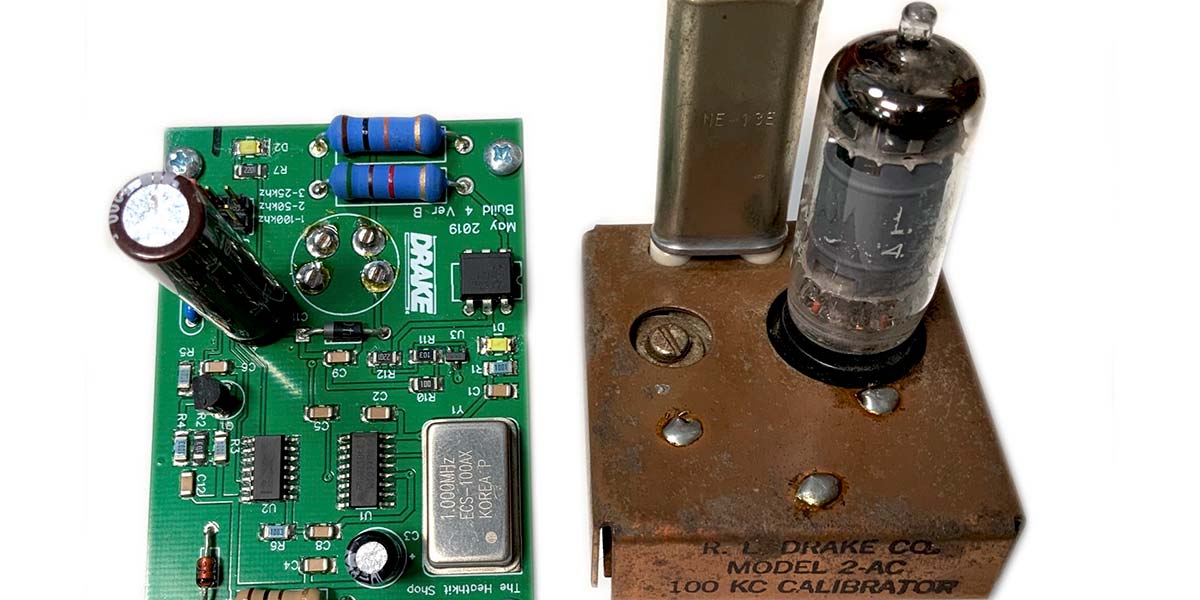I just finished another article in my series exploring vacuum tube technology. The focus was the Drake 2B communications receiver, a classic from the early ‘60s. One of the optional add-ons — a 2AC crystal calibrator module used to calibrate the slide rule display — is almost impossible to come by. I did manage to find a 2AC on eBay, but I paid much more than I should have for a circuit comprised of a single tube, crystal, variable capacitor, and pair of resistors.
Mike Bryce WB8VGE with the HeathKit Shop offers a plug-and-play solid-state calibrator. For only $35, you get a signal source that is switchable between the original 100 kHz markers and harmonics at multiples of 50 kHz and even 25 kHz. Moreover, unlike the crystal calibrator, the solid-state board is stable and doesn’t require periodic calibration with an external standard, such as a signal generator or broadcast station.
Take a look at the two circuits in the photo. What’s the first thing that you notice? If you’re like me, you’ll immediately appreciate the differences in complexity. The new calibrator is just about as complex as the entire Drake 2B receiver — at least in terms of active component count if you include the active elements within the two ICs. Just the 160 VDC to 3.3 VDC power supply is a work of engineering, involving a dozen parts. Then, there’s the indicator LEDs and the oscillator components proper.
Don’t get me wrong. I love the HeathKit board. It provides the functionality I need at a fair price. I have no doubt that it’s more stable, provides more output options, and requires much less power than the single-tube original. The only functional downside to the solid-state board that I can think of is relative resilience to an EMP pulse. I do wonder whether the added complexity is absolutely necessary or simply a result of our need as experimenters to make things “better.”
Is the increased complexity of the solid-state board necessary? Some increased complexity — such as the high-to-low voltage conversion — was inevitable. However, the remainder of the circuit could have been handled by a single transistor crystal oscillator. And yet, the oscillator now involves two chips and a dozen discrete components. I have to admit that, given all that printed circuit board real estate and that availability of inexpensive silicon, I’d end up populating it with something. Maybe a filter of some sort. Maybe a complete FM receiver. There just has to be some way of making it better, right?
Let me know how you define “better” when it comes to electronics. Do you feel the irresistible urge to pack as much functionality as you can into a circuit or project, or are you a minimalist? NV

